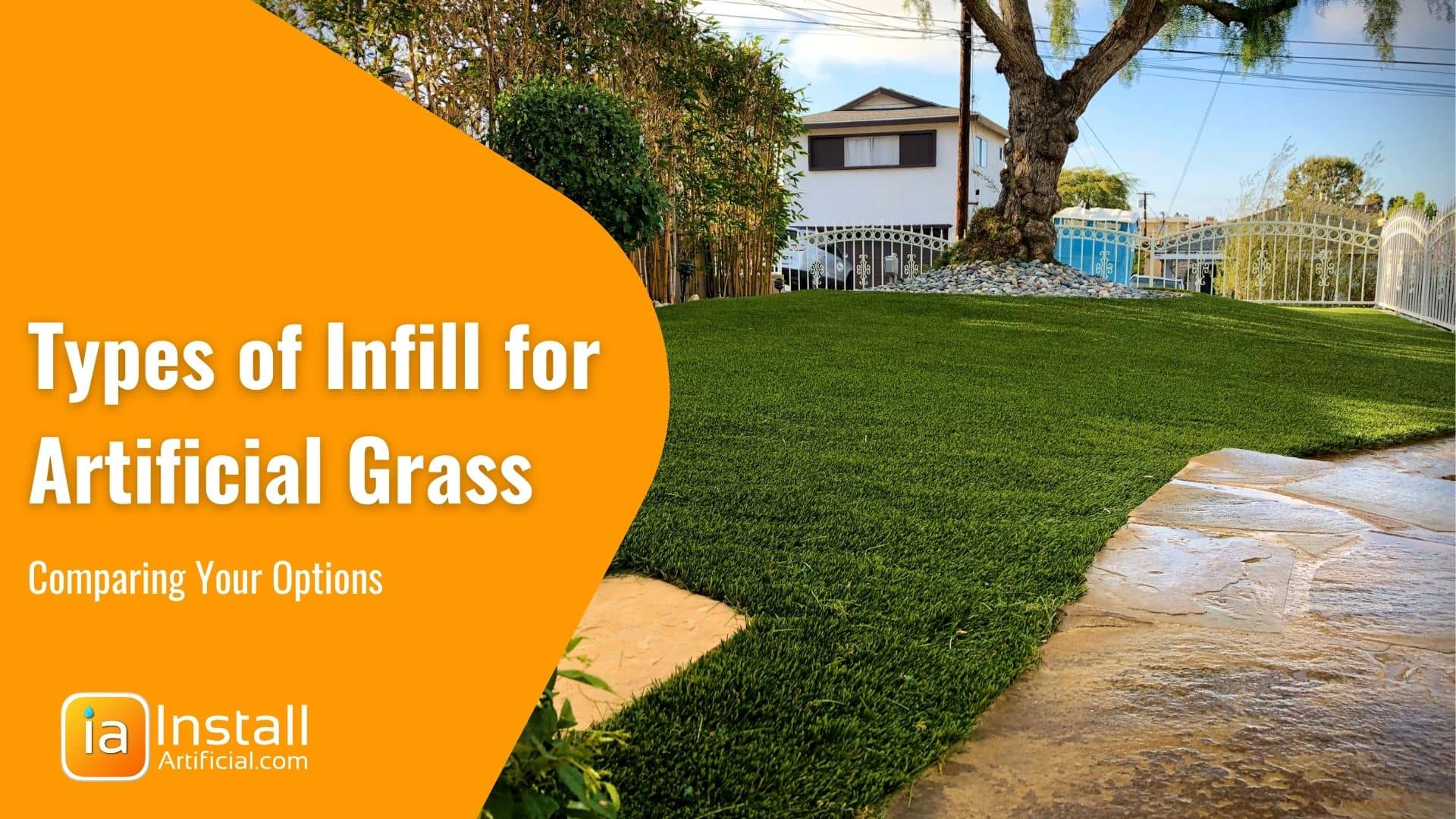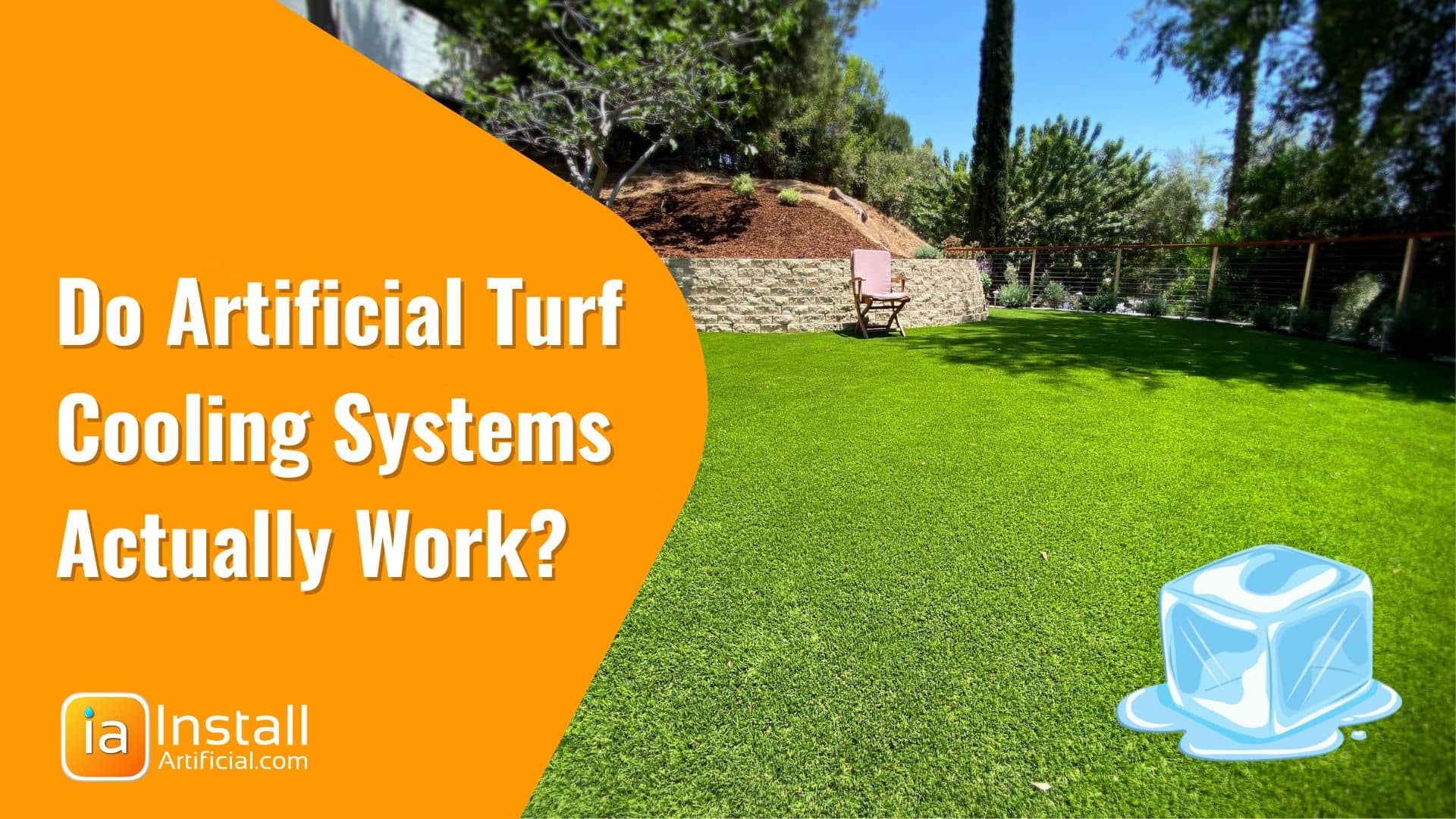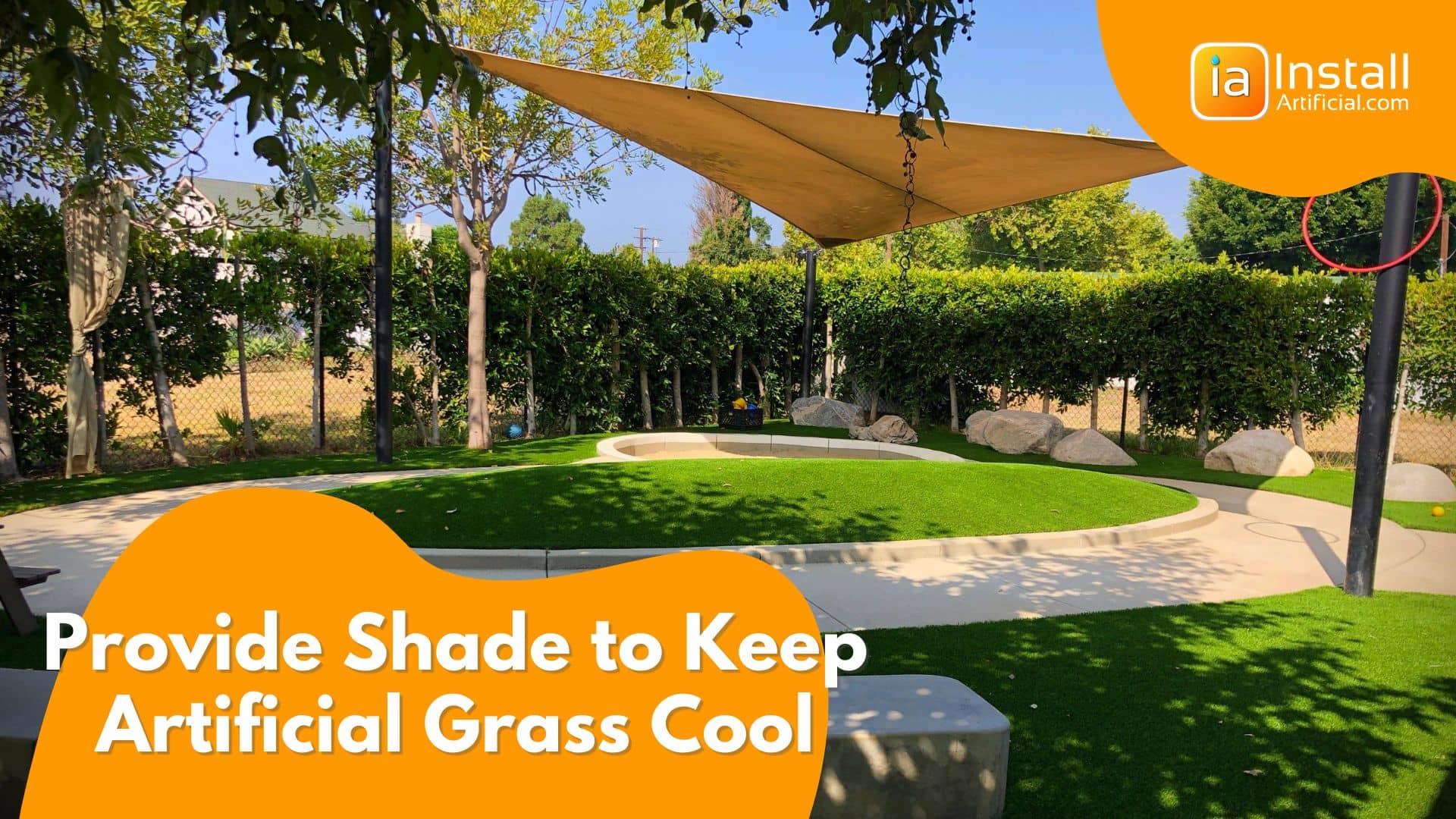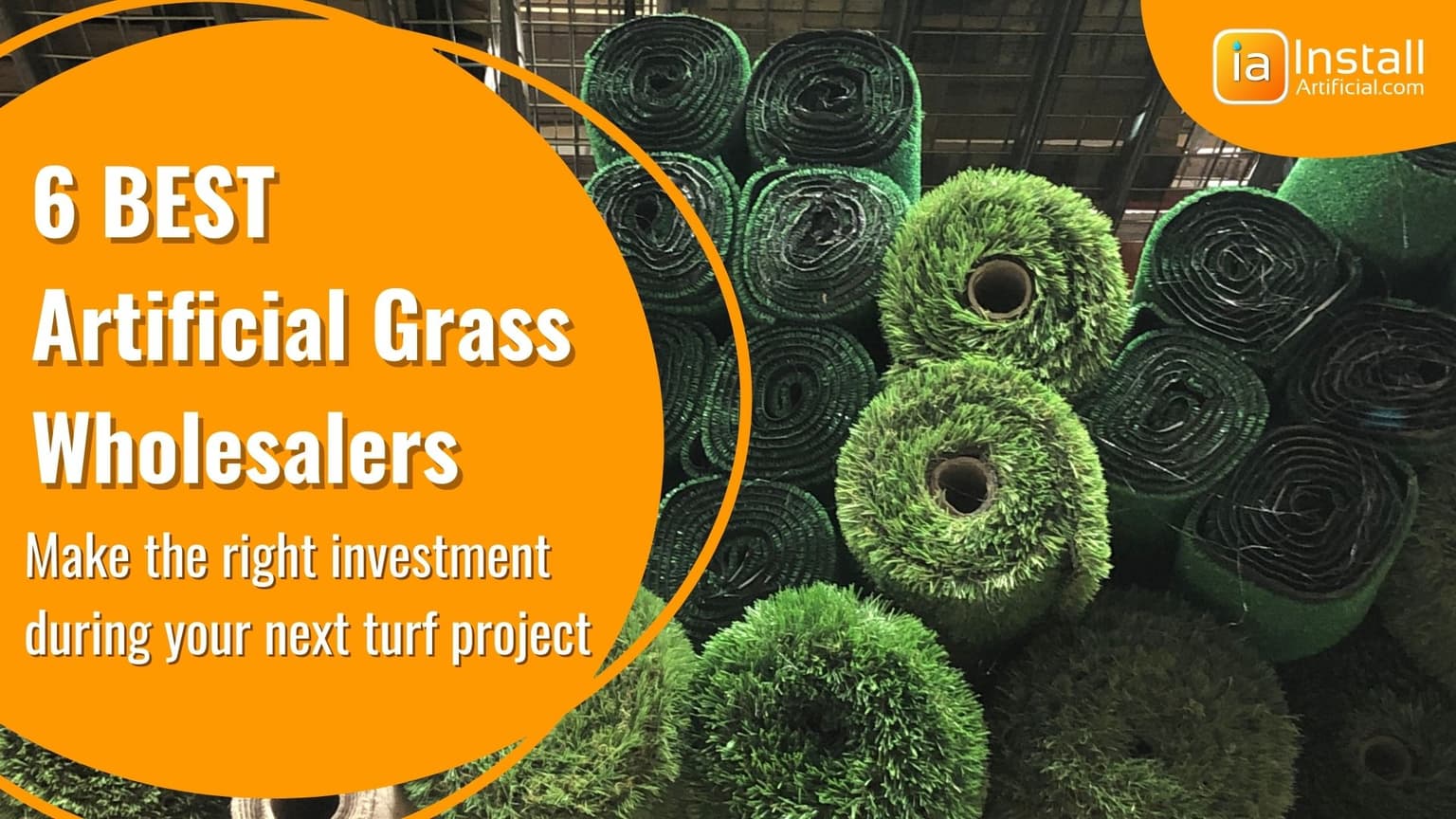
What is artificial turf infill and why is it necessary in most artificial grass installations? Learn the different types of infill and compare your options to decide...
It's no secret that artificial grass can become warm to the touch under the sun in the mid-day heat. With advancing technologies hitting the market many are taking advantage of premium cooling infills that pledge to offer an artificial grass surface that stays cool. But just how effective are these cooling systems?

One of the main reservations homeowners have when considering converting from natural grass to artificial is the surface temperature. Because artificial grass is made of different types of plastic, a warm surface has historically been inevitable on hot days. A few cooling turf infills on the market have created a buzz within the industry. Below we'll talk about the options available.
HydroChill is a unique type of pre-coated sand infill that aims to keep synthetic turf cooler in hot weather. When the turf is heated by the sun, water stored in HydroChill is released through evaporative cooling, providing a significant temperature reduction. HydroChill states it has the ability to lower surface temperatures by up to 50 degrees.
Much like HydroChill, T° Cool uses an evaporative cooling system within its coated infill to keep the surface cooler on warm days. T° Cool also features anti-microbial properties to prevent mold, bacteria, and mildew growth. According to their website, T° Cool infill has the ability to drastically drop the temperature of artificial grass - between 35-50 degrees.
While these cooling turf infills sound amazing and could be a game changer, are they actually effective? We're not so sure. HydroChill and T° Cool require the surface to be rinsed with water to activate the cooling system. Unless you first supply a heavy flow of water to the surface, these infills are not effective in cooling.
They are comparing a dry artificial lawn with silica sand to a rinsed-down lawn to state that they've dropped the temperatures between 35-50 degrees. Of course, you will see a drastic temperature drop when one lawn is rinsed with water while the other is not.
In our opinion, cooling infills for artificial grass may help keep the surface cool longer after being rinsed down, but we believe most of the temperature drop is coming from the fact that you're watering down the surface. You'll see a similar temperature drop when rinsing a surface that has regular silica sand infill.
How Can you Achieve the Coolest Artificial Turf Surface?
While all synthetic grass will become warm under direct sun, certain types of artificial turf will stay cooler than others. If you're on the hunt for artificial grass that stays cool, there are a few things to pay attention to:
The biggest factor that plays a role in the overall temperature of an artificial lawn will be the density of the grass chosen. While plush and soft artificial grass is sought after often, it will become the hottest on warm days because there are more fibers and the grass is heavier. If artificial grass temperature is your main concern, opt for a low-density turf for the best results.
In our testing and experience with artificial grass installation, we found that artificial grass that appears messier with non-directional blades will remain cooler than uniform artificial grass because there is more airflow throughout the grass. When the blades are more compact and uniform air has less opportunity to penetrate the surface and cool it down.
Like dark clothing, darker artificial grass attracts more heat and sunlight. Deep green synthetic lawns will typically be a bit warmer in comparison to one that's a lighter shade of green.
Artificial grass with flat or diamond blades will often become hotter under the direct sun than a more structured blade shape. This is because flat blades are more exposed to sunlight than those that are bent or corrugated.

Aside from choosing a less dense and light-colored artificial turf, you can also provide more shade by planting trees and installing shade sails, awnings, and umbrellas. This will help keep artificial grass cool on hot days.
Cool artificial grass for pets and kids
Our online synthetic turf store features some of the most popular grasses available from trusted suppliers in the industry. To help you narrow down your search, we performed a series of performance tests on each artificial turf product sold by InstallArtificial. Each grass is tested in terms of wear and tear resistance, recovery rate, and temperature. Whether you're installing artificial grass for pets or children, a cool surface should be top of mind. Check out our findings below to find the best artificial grass that stays cool:
Certainly! There are a few methods to keep artificial grass cooler in hot weather. The most effective way is to opt for shorter and less dense turf material during installation. Also, by implementing various cooling techniques such as rinsing the surface, providing ample shade, and using specialized infill materials designed to reduce surface temperatures, you can create a slightly cooler environment for your artificial grass.
Here are a few effective methods to keep artificial grass cool in hot climates:
1. Embrace the Shade: Creating natural or artificial shade over the turf area can significantly reduce surface temperatures. By providing some cover, you can create a cooler environment for your artificial grass.
2. Misting Systems: Install misting systems that release fine water droplets, which then evaporate and cool the surrounding air and turf. This can help maintain a comfortable temperature even on the hottest days.
3. Stay Hydrated: Keep your artificial grass hydrated by spraying it with water during peak heat. This can provide temporary relief and lower the surface temperatures.
By implementing these cooling techniques, you can ensure that your artificial grass stays cool and comfortable, no matter how hot the climate gets.
Cooling infills are materials that are strategically incorporated between the fibers of artificial grass. These specialized infills possess unique properties that absorb water and release it to cool the surface, resulting in a reduction in the surface temperature of the artificial grass. However, these infills are only effective when water is applied.
Cooling infills function by deflecting the sun's rays and minimizing heat absorption compared to conventional infills. Additionally, they have improved moisture retention, allowing heat to reduce through evaporation and ultimately lowering the temperature of the artificial turf surface.
Although it is possible to install cooling infills on your own, it is highly recommended to seek the advice of a professional artificial grass installer. Their expertise will ensure that you select the most suitable type of infill for your specific climate and turf, as well as guarantee a proper and efficient installation process.
The longevity of cooling turf infill systems can be influenced by various factors, including how much they are used, the climate they are exposed to, and the level of maintenance they receive. In general, it is important to keep in mind that cooling infills may require replenishment over time, especially in areas with high foot traffic.
Cooling systems, like misting systems or cooling infills, have the potential to provide temporary relief by lowering surface temperatures. However, it's important to note that they may require regular upkeep and water usage.
Certainly, combining cooling infills with other methods like shade and misting systems can enhance the effectiveness of reducing artificial grass temperatures. By utilizing a combination of these cooling techniques, you can create a more comfortable and cooler environment for your artificial turf.

What is artificial turf infill and why is it necessary in most artificial grass installations? Learn the different types of infill and compare your options to decide...

Synthetic grass is a great alternative to natural grass, providing a multi-purpose solution for dead lawns. However, purchasing cheap wholesale artificial turf material...